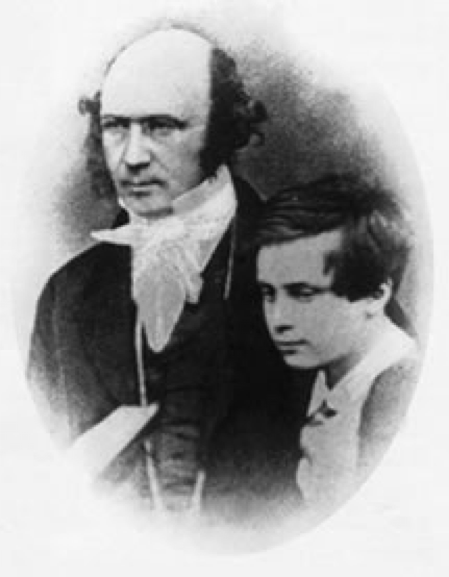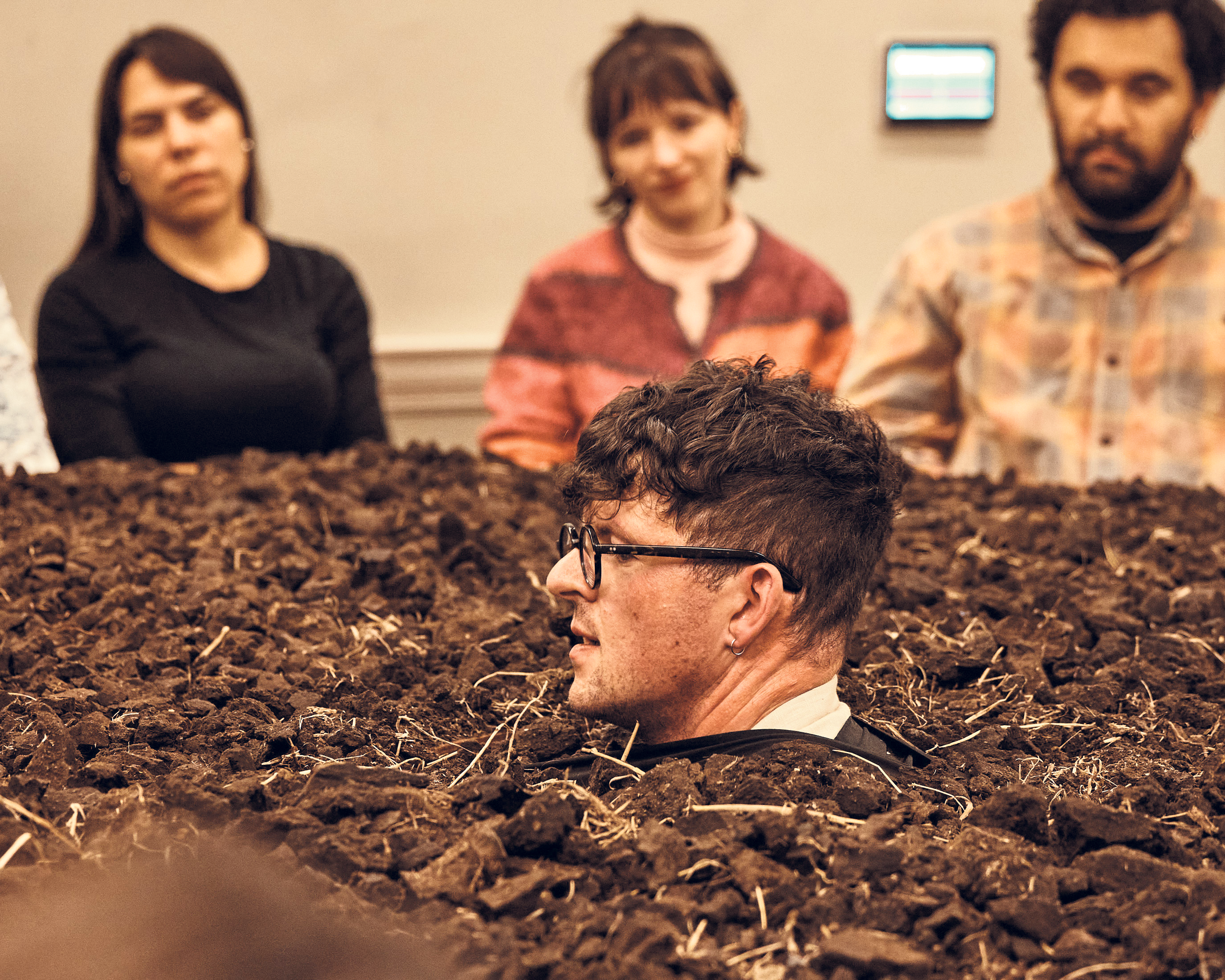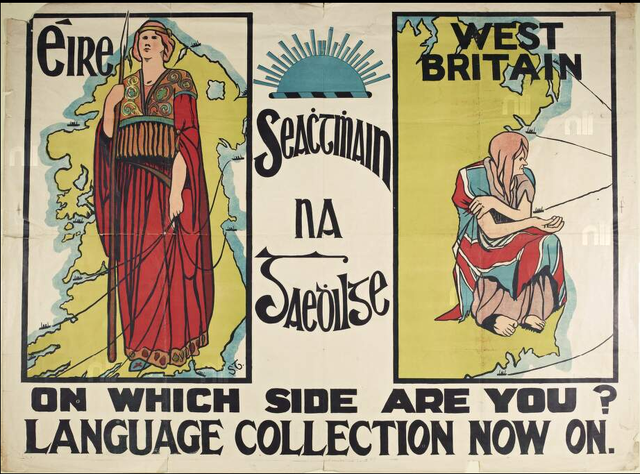As the story goes, Hiero II, the Greek tyrant of Syracuse, suspected that the goldsmith he had commissioned to make a votive crown cheated him. Convinced that it was not pure gold, Hiero tasked Archimedes with measuring the volume of the crown along with its weight. However, the irregular shape of the crown evaded conventional measurement.
Agonising over his predicament, Archimedes took a trip to the Roman baths when he realised that the more his body sank into the water, the more water was displaced. If he placed the crown in water and it displaced a different volume than the same weight of pure gold, then the goldsmith could be found to have cheated Hiero. Archimedes was so overcome by achieving the solution, the story goes that he leapt out of the bath and ran naked through the streets of Syracuse shouting “eureka, eureka!”.
A commemorative walk from Dunsink Observatory to Broome Bridge on the Royal Canal takes place annually to celebrate another “eureka” moment in mathematical history. William Rowan Hamilton, Ireland’s most celebrated mathematician, was walking with his wife to a meeting of the Royal Irish Academy in 1843. As they crossed Broome Bridge, Hamilton had a flash of insight that he later described in a letter to his son Archibald as an “electric current” that closed, “and a spark flashed forth”. Hamilton realised a solution to an algebraic problem that had plagued him for years and produced a system of four-dimensional numbers: quaternions. Hamilton couldn’t resist the impulse to carve the fundamental formula with a knife into the soft limestone of Broome Bridge: the world’s only mathematical graffiti.
What connects Hamilton to Archimedes – aside from memorable anecdotes and unexpected moments of mathematical insight – is that they were both engaged in “blue-skies” research. Driven by scientific rigour without commercial limits or apparent real-world relevance, this kind of research is a rarity in the scientific community today. Although we live in an era of unprecedented scientific progress, funding decisions are often determined by the promise of immediate, sometimes commercial applications.
What connects Hamilton to Archimedes – aside from memorable anecdotes and unexpected moments of mathematical insight – is that they were both engaged in “blue-skies” research
Peter Gallagher, a professor in astrophysics and Trinity’s associate dean of research, explains that Hamilton “was doing what was apparently quite useless research at the time, that only really found relevance when the space programme took off and also when computer gaming took off. So it just shows you that this curiosity-driven research is really important to allow people like Hamilton, and others, scientists and researchers to go off and really explore what they’re passionate about and what they don’t understand. It’s kind of unbridled”.
A child prodigy or “wunderkind” as Prof Samon Shatashvili, director of the Hamilton Mathematics Institute, suggests, Hamilton had a particularly strong aptitude for language at a young age, especially in Latin, Greek and Hebrew, and was educated by his uncle Rev James Hamilton until he entered Trinity College in 1823. Hamilton obtained an “optime” in classics during his first year, a distinction only awarded once in 20 years. It was during his time as a student that Hamilton’s penchant for mathematics was stimulated. Colm Mulcahy, Adjunct Professor at Waterford Institute of Technology, explains that Hamilton’s professors “realised this is the kind of guy who only comes along once every century … To this day, I don’t think any Irish scientist or mathematician has eclipsed Hamilton. He’s cobwebbed, in one sense, because he’s been dead for a long time, but, I mean, who can compare with him?”
Shatashvili suggests that Hamilton’s intellectual contribution and fidelity to Trinity is not celebrated enough. “When I came to Trinity twenty years ago, I was surprised that there was no monument to Hamilton, he was not celebrated enough in my view…one thing that is not emphasised enough at Trinity was that he worked all his life at Trinity.”
Hamilton was appointed the Andrews Professor of Astronomy at Trinity in 1827, at the tender age of 21, and moved into Dunsink Observatory where he lived for the rest of his life. Gallagher says that Hamilton was not meticulous at maintaining the instruments or dedicated to the work that previous directors had started in working out the distances to stars. “The observatory then really suffered as an observatory under his directorship.”
Hamilton was doing what was apparently quite useless research at the time, that only really found relevance when the space programme took off
Instead, Gallagher says that “was really consumed with doing detailed calculations around optics. He worked out how light travels through crystals and through different materials. And he found light did funny things as it went into these crystals”.
Hamilton discovered conical refraction in biaxial crystals, which Gallagher explains was “the first time that a theoretical prediction had been verified by an experiment in the lab”. Humphrey Lloyd, a professor of natural philosophy at Trinity, sought to verify Hamilton’s prediction through experiment and observed this phenomenon of conical refraction.
Mulcahy says that “when he was interested in something, he didn’t care whether it had application or not in order to study”. In fact, Gallagher explains “conical refraction is still apparently useless. Nobody has worked out a reason for conical refraction, to use this. It is beautiful. It is mathematically elegant. It is experimentally interesting. But there is still no use for conical refraction”.
Another seismic scientific advancement, Hamilton reformulated the classical mechanics of Newton and used the energy of a system to account for what is today called the Hamiltonian. “Loved and hated in equal proportions by many students around the world”, according to Gallagher, the Hamiltonian is at the heart of both general relativity and quantum field theory, with a “huge impact” in these fields of physics.

Before his discovery of quaternions, Hamilton thought the answer to constructing mathematical insight into three-dimensional geometry lay in a theory of triplets. Although the relevance of quaternions endures in space navigation, computer games and animation, vector analysis and many other areas, Mulcahy explains that “for him, it was an exercise in algebra. And it turned out to be important there, of course. A century and a half later, it had a completely different application, which is extraordinary.”
Using his quaternions, Hamilton could manipulate complex numbers, which are made up of a real number and an imaginary number, represented by “i”, and extend their application to three-dimensional geometry. Although they were initially received with scepticism by the scientific community, complex numbers have today found application in physics and electrical engineering. By adding a fourth dimension, Hamilton’s quaternions could account for three-dimensional geometry and be used in the study of rotations. Hamilton named the new system of numbers “quaternions” because each number had four components. The revelation of a formula that could account for our three-dimensional world in a mathematical structure inspired another historic Irish figure to engage in minor vandalism: Éamon de Valera scratched Hamilton’s formula on his cell wall at Kilmainham Gaol in 1924.
Quaternions did not obey the laws of ordinary arithmetic, which Mulcahy explains “shocked” the mathematical community because “the order in which you multiply things makes a difference … it made a difference whether you multiply A times B, or B times A – you wouldn’t get the same answer”. He explains that nobody had ever created a number system to correctly account for this, but that Hamilton’s discovery “opened up a whole new universe of algebra, quite apart from the applications 140 years later in computer graphics, robotics” and various other fields. “If that was the only thing he’d ever discovered, he’d be a footnote in history. But he did so much more.”
Hamilton’s life has been recounted by RP Graves, Sean O’Donnell and Thomas Hankins, among others, although such biographies have treated accounts of his marriage and alcohol abuse in a misleading manner. Mulcahy explains that “some of the rumours about Hamilton turned out, maybe not to be so accurate through that at some point along the line”.
There’s quite a few things about him that are easy to repeat – he was a drunk, he had an unhappy marriage, that he spent years trying to multiply triplets. All of these things are not true
Mulcahy explains that Anne van Weerden from Utrecht University, the author of A Victorian Marriage: Sir William Rowan Hamilton, “has done ground-breaking work in in taking a closer look at the facts as opposed to the popular stories about Hamilton’s personal life, there’s quite a few things about him that are easy to repeat – he was a drunk, he had an unhappy marriage, that he spent years trying to multiply triplets. Well, all of these things are not true … But these stories get passed around, and it’s very hard to erase them”.
Using evidence of the strict Victorian social rules and the nature of drinking habits in Ireland during the early 19th century, Van Weerden debunks his distorted biographical representation.
She came across the Graves biography which sought to blame Lady Hamilton for her husband’s alleged alcoholism and argued that Hamilton could not ameliorate his wife with culture. Van Weerden researched his relationship with the philosophical and arts elite in the early 19th century with which Hamilton associated as well as his treatment as a child prodigy. “He was, of course, praised from his very early childhood and his lifelong struggle was to not become vain”, Van Weerden explains. “And he needed a wife with her feet on the ground … that’s, of course, what a philosophical mathematician with his head in the clouds needed.”
In many biographical sketches, Helena Maria Hamilton (née Bayly) is painted as timid, often seriously ill and intellectually dwarfed by her husband. A blunt conclusion has been taken up in several accounts that he was unhappily married, although gaping gaps exist between Graves’s discussion of Hamilton’s private life and the logical connections, perhaps because he did not seek to harm Hamilton’s posthumous reputation. Van Weerden suggests that the pages of Graves’s three volume biography of Hamilton started to live a life of their own, and his portrayal as an unworldly, unhappily married genius emerged and was printed in the historical mathematical lexicon. Her work returns to primary sources and tells Hamilton’s story anew.
Although they were originally regarded as esoteric, the modern use of quaternions in spacecraft guidance, navigation and control engineering was unfathomable. Quaternions were used in the NASA Space Shuttle programme and today account for the attitude of almost every spacecraft.
Gallagher explains that “the link to the Apollo missions is not entirely clear. On Apollo 11, there was a problem with a thing called gimbal lock … Hamiltonian mechanics weren’t used at that point. But if they had been, it would have helped with that, and in subsequent space missions Hamilton’s quaternions are used”.
The attitude measurement device on board the Apollo missions was three-gimbaled and could encounter difficulty when two gimbals become aligned, leading to gimbal lock. This mechanical issue could render it impossible for astronauts to determine the attitude. It is widely believed that quaternions were used to prevent this gimbal lock predicament, however they were not used at this early stage of space discovery. Quaternions were first used by NASA to effect rotations as part of the guidance, navigation and control systems on the 1981 Space Shuttle launch.
Van Weerden emphasises that “there were no quaternions in the Apollo programme, we even know where the story came from” – but “no one is interested” in hearing the truth. She says that Hamilton’s work is wrongfully attributed to various achievements as a “counterbalance” to his reputation. The convenient story of his private life, she explains “was of course so easy to believe because it painted a living man” who was an alcoholic and unhappily married. But even with a corrected account of instances where Hamilton’s discoveries have and have not been applied, such evidence is not always enough to change this narrative.
Gallagher notes the way in which science advances as a community, with “a herd of scientists going forward, and each one is chipping away and making a little bit of an advancement. And then one amazing person stands on the shoulders of giants … they take that cumulative understanding and take a leap forward, and we all catch up with them”. Instead of capitalising on his status or scientific advancements, however, Hamilton made a point of spending his career in Ireland until he died in 1865.
On Apollo 11, there was a problem with a thing called gimbal lock. Hamiltonian mechanics weren’t used at that point. But if they had been, it would have helped with that
Since 1843, long after the original breathless inscription eroded, Broome Bridge has become a site of pilgrimage for mathematicians across the world. Although Professor Emeritus of Mathematics and Statistics at NUI Maynooth Anthony O’Farrell initiated the annual visit in 1990 when he took his class from NUI Maynooth for an impromptu excursion, members of the mathematical community have made unofficial visits to various sites around Dublin. These landmarks include Dominick Street, where Hamilton was raised, Dunsink Observatory, and the house near Trim where he lived with his uncle and tutor, Rev James Hamilton.
At the annual “Broomesday” event on October 16th, O’Farrell explains that “we get the youngest person present to scratch the formula again on the bridge, because it doesn’t last. It’s a soft limestone, so you scratch it and in a month or so there’s nothing left over. So whatever Hamilton scratched has long gone off the bridge”.
For O’Farrell, it was important to commemorate the invention of quaternions and celebrate the nature of scientific insight: “When the understanding arrives, it just presents it back to you. This can happen at any time, just in a moment, when suddenly, the illumination has been worked out in the background and then you’re told” the solution. O’Farrell explains that much like the story of Archimedes, Hamilton’s discovery of quaternions is one worth celebrating.
Hamilton’s legacy in mathematics, physics and astronomy is ubiquitous today, but during his lifetime his colleagues found it difficult to speculate on which of his discoveries he would find acclaim for. Hamilton’s discoveries were in distinct fields of science, and so his work was not judged cumulatively. As a revolutionary mathematician in our intellectual heritage, it is time that the nature of his private life as well as his intellectual contribution is truthfully recounted.







